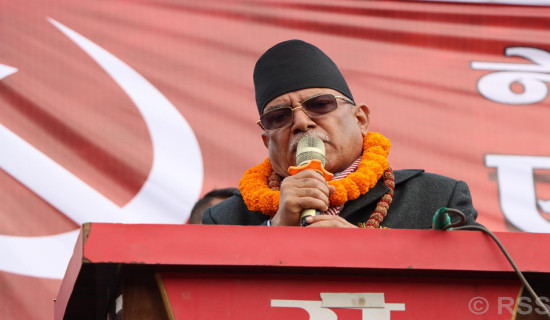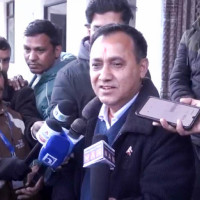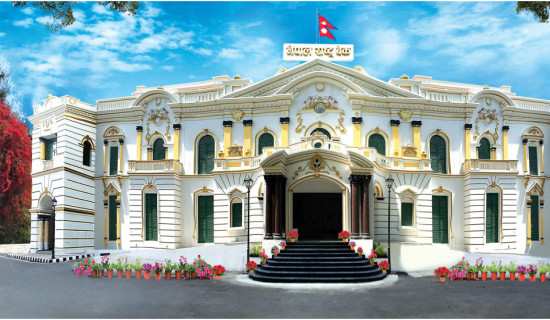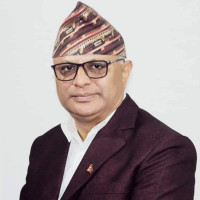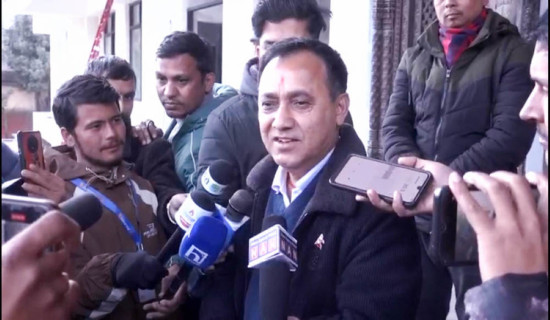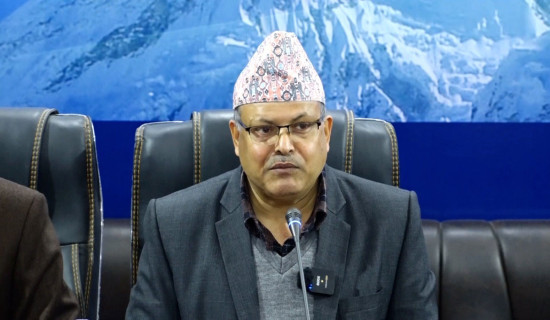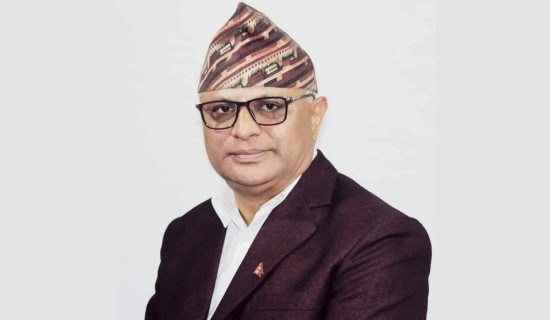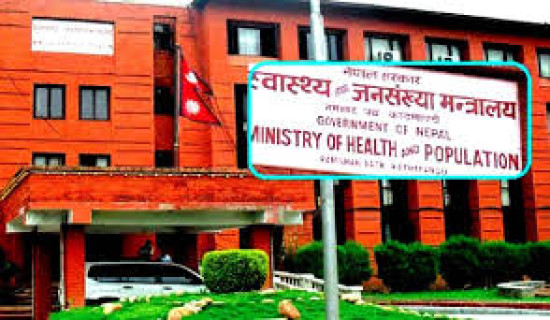- Friday, 2 January 2026
A year of govt: Economy making positive headway
By Hemanta Joshi, Kathmandu, Dec 23: It is going to be a year since the formation of the incumbent government led by Prime Minister Pushpa Kamal Dahal 'Prachanda'.
The economic condition of the country was not in good shape when the government assumed its responsibilities. The internal and external sectors of the national economy were under tremendous pressure due to the COVID-19 pandemic and the Russia-Ukraine conflict among others.
Compared to the previous year, the economic indicators are moving towards a positive direction at present. Rays of hope could be seen in the financial and monetary sectors.
Immediately after the formation of the government, the meeting of the Council of Ministers was convened on December 26, 2022, and decided to proceed with economic reform at policy, procedure and institutional levels according to topmost priority.
The reformative actions seem to yield some desired results as well. The external sector is in comfortable condition while there has been a considerable increase in the remittance inflow and influx of foreign tourists.
Improved indicators
Looking at the major economic indicators of the country during the past year, there are signs of improvement. The inflation has decreased in comparison with the last year.
The statistics of Nepal Rastra Bank (NRB) showed that the consumer price inflation had remained at 7.38 per cent as of mid-December 2022. The inflation rate in the first four months of the current fiscal year stands at 5.38 per cent.
The external sector was terribly in bad shape last fiscal year. The total foreign exchange reserve was Rs 129.56 billion. The foreign exchange reserve was able to cover 10 months of import of goods and 8.7 months of imports of goods and services.
The foreign reserve exchange as of mid-November this fiscal year is Rs 169.6 billion. Considering the import of the last four months of the current fiscal year, it seems that the current foreign exchange reserve could cover 13.6 months of import of goods and 11.4 months of import of goods and services.
Similarly, there has been a noticeable improvement in the arrival of foreign tourists and remittance inflow compared to the last year. Over 954,000 foreigners visited Nepal in the last 11 months of 2023.
The remittance inflow increased by 26.4 per cent and reached Rs 477.96 billion in the first four months of the current fiscal year.
The balance of payment is at a surplus of Rs 147.11 billion.
The government has heeded the repeated requests made by the entrepreneurs to consider reducing the bank interest rate. The inter-transaction rate of the banks and financial institutions is, thus, declining lately.
The weighted average inter-bank transaction among the banks was 8.50 per cent as of mid-November last fiscal year. It has come down to 3.47 per cent during the same period this fiscal year.
After the first quarterly review of the existing monetary policy, Nepal Rastra Bank (NRB) reduced the bank rate from 7.5 per cent to seven per cent, while the policy rate from 6.5 per cent to 5.5 per cent.
It has been taken positively by the businesspersons and industrialists, for they had demanded it for long.
However, the rising public debt and deficit budget are worrying issues in the Nepali economy.
In the first quarter of the current fiscal year alone, Nepal witnessed an increase in the public debt of Rs 57.71 billion.
Coupled with this is the inability to increase capital expenditure. The revenue failing to meet regular expenses is equally upsetting. These are important areas the government needs adequate attention.
Till the Mangsir end (mid-December), the government has been able to collect only 26.07 per cent of the target revenue for the year.
Meanwhile, the government has taken significant decisions on infrastructure developments this past year. The decision to forward the constructions of Budhigandaki and Karnali Chisapani Reservoir-based Hydropower Projects is taken positively.
Similarly, taking ahead the Upper Aruan and Dudhkoshi Hydropower Projects are other welcome initiatives.
The national pride project, Pokhara Regional International Airport, was inaugurated on January 1, 2023.
The installed hydropower capacity has so far reached 28,000 MW in Nepal, which is 94 per cent coverage in the country.
Of late, the government has intensified the process of exporting the surplus power. Various programmes are run on clean drinking water.
Foreign visits to boost relations, economy
Moreover, PM Prachanda conducted a visit to India and China last year. Many important agreements were signed during the visit. An understanding was reached to forward a process for a tripartite agreement after agreement in principle to start the export of electricity produced in Nepal to Bangladesh via India.
During the visit, an agreement was signed to sell 10,000 MW of electricity in 10 years from Nepal as well as to finalize the detailed project report of the Pancheshwor multi-purpose project within three months.
Similarly, an agreement was reached to amend the Nepal-India Transit treaty in the course of the India visit as well as expand the petroleum pipeline from Amalekhgunj of Bara to Lothar of Chitwan and Siliguri of India to Charali of Jhapa with financial and technical support of India.
Likewise, Nepal and India signed a memorandum of understanding related to cross-border digital payment.
PM Prachanda embarked on a China visit in the third week of September and the two countries signed various agreements for cooperation in different sectors.
Both countries have agreed to collaborate in inter-state infrastructure development, trade promotion and facilitation, expansion of diplomatic relations and regional cooperation.
Similarly, an agreement was reached to take the 'BRI Implementation Project' soon to a conclusion to forward the agreement signed on May 12, 2017, for bilateral collaboration as per the 'Belt and Road Initiative Framework'.
Both sides agreed to build a 'Trans-Himalayan Multi-Dimensional Connectivity Network' as well as to reopen Nepal-China checkpoints. China and Nepal made the understanding to give final shape to the 'Nepal-China Electric Power Co-operation Plan' as well as to initiate the activities of 200-kV. Jilong-Kerung-Rasuwagadhi-Chilime Inter-state Transmission Line as soon as possible.
Meanwhile, the government has prepared to organise an investment summit in Kathmandu from April 21, 2024.
A directive committee under the coordination of the Finance Minister, an implementation committee under the coordination of the Chief Secretary and a technical committee under the coordination of the Secretary of the Ministry of Industry, Commerce and Supply were formed to organise the investment summit. (RSS)

.jpg)

